Image / Vincent Astor's yacht the USS Nourmahal, San Pedro, 1936

Get Citation
We recommend you include the following information in your citation. Look below the item for additional data you may want to include.
Contact Owning Institution
All fields are required.
RE: Calisphere: Request high-resolution copy of item for Vincent Astor's yacht the USS Nourmahal, San Pedro, 1936
Item information. View source record on contributor's website.
About the collections in calisphere.
Learn more about the collections in Calisphere. View our statement on digital primary resources .
Copyright, permissions, and use
If you're wondering about permissions and what you can do with this item, a good starting point is the "rights information" on this page. See our terms of use for more tips.
Share your story
Has Calisphere helped you advance your research, complete a project, or find something meaningful? We'd love to hear about it; please send us a message .
Explore related content on Calisphere:
Los Angeles Times Photographic Archives
Institution: UCLA, Library Special Collections, Charles E. Young Research Library
Home > Contents and pieces > Piece > On the Nourmahal
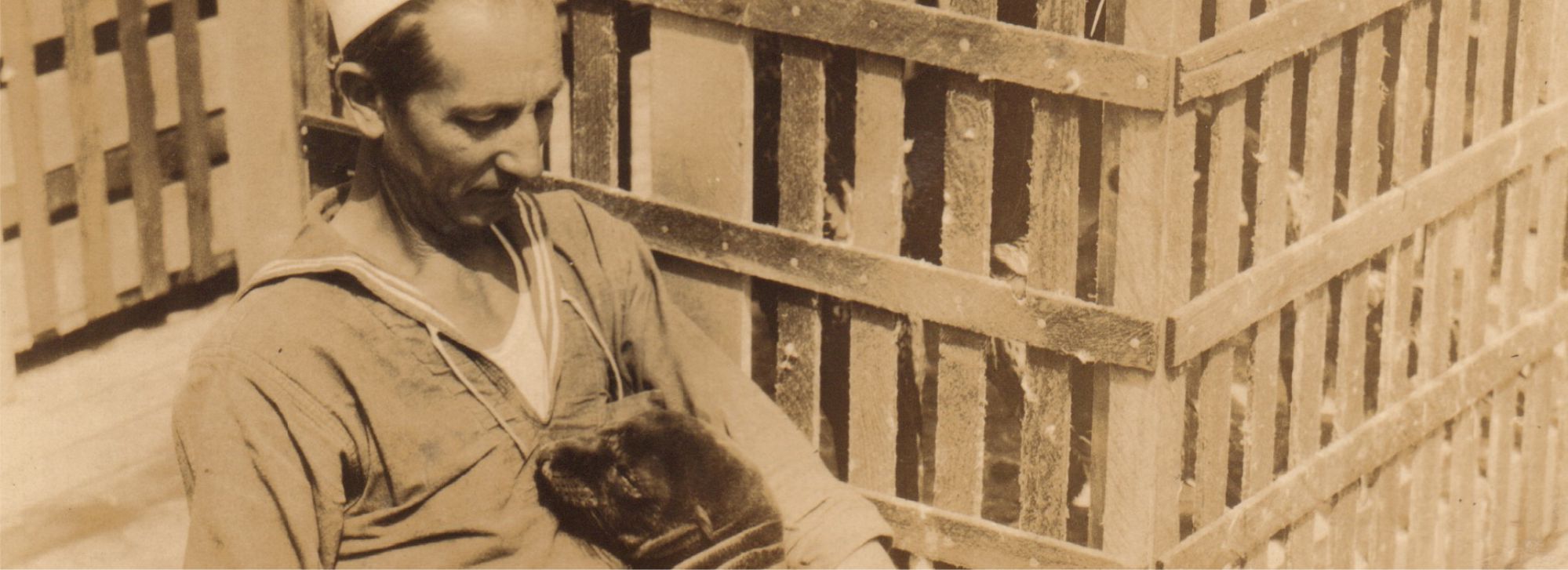
On the Nourmahal
Every document can be understood as an individual piece, notable for its historical importance, its aesthetic beauty, its uniqueness... Some of them manage, at the same time, to summarize a whole story in themselves: in their individuality, they condense an entire reality. This is the case of a photo taken during the famous Nourmahal Expedition .
The USS Nourmahal was a ship of about 80 m in length, built in 1928 as a pleasure yacht for the American billionaire Vincent Astor at the Krupp shipyard in Kiel, Germany. She was the third Astor family yacht to bear that name (which in Hindi means "Light of the Palace" and belongs to the heroine of a poem in Lalla Rookh , a novel by Thomas Moore from 1817). The cover of Time magazine for February 6, 1928, proclaimed it the best of her time.
In 1940 the vessel was acquired by the US Coast Guard for one million dollars, and in 1943 it was converted by the US Navy into a gunboat to face World War II. Luckily for her, she never needed to go into combat. In 1946 she was decommissioned, and in 1948 she was abandoned. Her story ended in 1964, when she was sold to scrap dealers for $ 27,000 and disarmed.
Between 1928 and 1942, beyond merely recreational uses, the ship was used for philanthropic purposes, including serving as a means of transportation for various naturalist expeditions. Specifically, between March 23 and May 2, 1930, Vincent Astor took a group of American scientists to Galapagos, Cocos and Panama on a sample collection trip: the Nourmahal Expedition. The researchers belonged to the New York Aquarium, the American Museum of Natural History, and the Brooklyn Botanical Garden.
Copies of the photographs taken during that expedition are kept in the audiovisual collection of the Charles Darwin Foundation (CDF) Library, Archive and Museum, in an album entitled precisely "Nourmahal". The images show, among other things, details of the journey, panoramic views of the forested and exuberant nature of the upper part of Santa Cruz Island, and moments of the identification, collection and handling of specimens in Galapagos.
And among them, one that is curious is the photo of a sailor with a sea lion pup on his lap.
Among the manuscripts in the special collection of the CDF Library, Archive and Museum, there is a document which happens to be complementary to the "Nourmahal" album: a typewritten copy of the field diary of James P. Chapin, one of the scientists who participated in the trip to Galapagos. The very careful notes reflect the day-to-day life of that researcher, an American ornithologist at the American Museum of Natural History. And among them appears the following, noted on April 10, 1930:
In 3 hours we had rounded Seymour Island and stopped opposite the passage between North Seymour and South Seymour. Here there is a low sandy islet with several patches of rocks where the sea lions abound. Most of us visited it by launch. Three young sea lions were caught.
There is no other mention of captures of sea lions in the entire journal. So, thanks to some writings scribbled in a field notebook almost a century ago, we can know that the cub in the photo was born in that strip of sand known as "Mosquera Islet", between the Seymour Islands.
We could probably trace the animal and find out where its days ended. And even know the name of the sailor who held it in the image. Because his role, ship's carpenter, appears in Chapin's diary, in the entry for May 1, 1930:
Photos of menagerie on upper deck. Bronson drawing legs of tortoise (suspended). Ship's carpenter holding sea-lion.
This is how dense and rich are the memory webs that can be woven inside libraries, archives and museums: in a single piece, the history of a scientific expedition is summarized and, in a certain way, the spirit of an era and the way natural sciences were thought.
[See also: Letter 3 , Letter 12 ].
Aa.Vv. Nourmahal Album . [Photograph]. [N.d.] : Aa.Vv., [1930]. 76 pp. : b/w ill. : 30 x 45 cm. DDC 508. Well preserved.
Subject categories: History of Galapagos | History of science | Natural history Keywords: Expeditions | Memory | Photos | Travels Time framework: 1930
- Cover Letters
- Jobs I've Applied To
- Saved Searches
- Subscriptions
Marine Corps
Coast guard.
- Space Force
- Military Podcasts
- Benefits Home
- Military Pay and Money
- Veteran Health Care
- VA eBenefits
- Veteran Job Search
- Military Skills Translator
- Upload Your Resume
- Veteran Employment Project
- Vet Friendly Employers
- Career Advice
- Military Life Home
- Military Trivia Game
- Veterans Day
- Spouse & Family
- Military History
- Discounts Home
- Featured Discounts
- Veterans Day Restaurant Discounts
- Electronics
- Join the Military Home
- Contact a Recruiter
- Military Fitness
Vincent Astor, Gentleman Spy
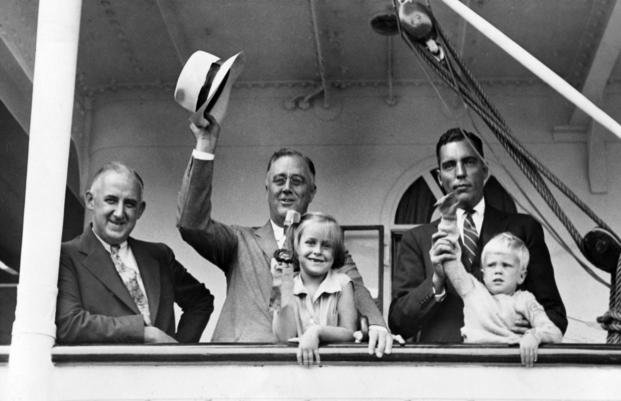
William Vincent Astor's life was one of unenviable isolation and singularly strange circumstances. Literally in the manor born, he arrived into the world in the Fifth Avenue mansion of his grandmother, Caroline Astor, who ruled mercilessly over the Knickerbocracy of Manhattan high society. News of his birth in 1891, near the end of the gaudy binge of the Gilded Age, was announced on the front pages of the city’s newspapers, and invariably included estimates of the family’s vast fortune.
However, whatever expectations existed that he would grow into a suave prince of high society were eventually and forever abandoned. Tall and gangly, he would never have been mistaken for handsome. The sickly aspect of his youth never quite left him. Socially awkward among business associates, friends, and in public, he would invariably be defined by the enormous family fortune.
In 1912, his father, recently divorced and more recently married to a woman not much older than Vincent, perished on Titanic, and the majority of the family fortune and vast real estate holdings passed to Vincent. Just 20, he withdrew from his sophomore year at Harvard to manage a portfolio of real estate so extensive as to have earned his family the not altogether flattering sobriquet “New York’s Landlord.” Accumulated over generations of Astors, who bought but rarely sold, the holdings included large swaths of land throughout Manhattan and outer boroughs.
Young Astor, according to most accounts, was a competent though not particularly enthusiastic steward of the real estate empire. Perhaps more than anything, he exhibited signs of civic duty. He supported charities, built a playground and baseball field in Harlem, donated land to the city for public housing, and settled lawsuits not always in the interest of the family fortune. He served on obscure committees, supported well-intentioned reform movements lacking in social cache or fancy charity balls. In one instance, he landed on the executive committee of the America Rumanian-Jewish Emancipation Committee, a very niche organization dedicated to fighting antisemitism in Romania. He founded a home for convalescence of children of the underprivileged not far from his estate in Rhinebeck, New York, which still exists today as Astor Services for Children & Families.
“Is it unreasonable to suppose that because a man is rich, he is also useless?” he once asked. Of course, there was no lack of organizations seeking his financial support, while those that could make use of his natural intellect and enthusiasm were few and far between.
Just when young Astor became intrigued by espionage is unclear. As with many of its practitioners, he seems to have stumbled into it. During WWI he was among dozens of members of the New York Yacht Club who made their yachts available for service, then served as a junior officer on it as a convoy escort. And he seemed to have maintained contact with Office of Naval Intelligence (ONI) during the interwar years, providing morsels of intelligence as they came his way.
In 1930, ONI records noted information Astor transmitted while yachting in the Caribbean and Pacific. However, as was later reported, he was seen as enthusiastic, if a bit naïve about spying. This would not have been an unusual assessment of amateur spies, typically judged dilettantes by the professionals.
Working in the background, Astor was also a founding member of The Room (later known as The Club), a small tightly knit group of powerful, well-connected men who met in secret to share intelligence garnered from New York’s social whirl, travel, and business dealings. Started in 1927, among the club members who met monthly in an unremarkable apartment at 34 East 62 Street were Winthrop W. Aldrich, chairman of Chase National Bank; publishing magnet Nelson Doubleday; diplomat David K.E. Bruce; Marshall Field III, scion of the Chicago department store family and publisher; Allen Dulles, a future Director of Central Intelligence, then a Wall Street lawyer; and William Donovan, a World War I Medal of Honor recipient and future head of America’s first civilian spy organization, the Office of Strategic Services (OSS), at the time working at a Wall Street law firm. Also members of The Room were Kermit and Theodore Roosevelt Jr., two of the former President’s sons.
The Room was largely made up of amateurs, though some of its members did have experience in espionage.
The naturalist and explorer C. Suydam Cutting served in Europe under General John J. Pershing in G-2; William Rhinelander Stewart (the “Best Dressed Man In New York City”), served in ONI; and Sir William Wiseman, a one-time British spy, who settled in the city as an investment banker, is also said to have been a member. Wiseman was perhaps the most skilled and experienced practitioner among the group, having run British intelligence operations in the U.S. during WWI and acting as back channel to President Woodrow Wilson.
An occasional guest would also make an appearance at the Room’s meetings. The famous author and former spy Somerset Maugham, whose book Ashenden (1927) had caused quite the stir by mixing spy fact and fiction, spoke to the members. So did polar explorer Richard E. Byrd. Astor, in fact, was the primary backer of Byrd’s 1929 aeronautical expedition to Antarctica, subsequently getting a mountain there named after him .
These were very much men of a larger world at a time when travel was beyond the means of most. Jetsetters before there were jets, they traveled on the grand ocean liners and private yachts to the capitals of Europe, South America, and beyond, bringing back political insights, gossip, business rumors, and economic news. They were also dedicated private clubmen. No doubt, members of some of New York’s most exclusive clubs shared news and opinions, unaware their tales would be discussed in an even more exclusive club.
Relevant items were discreetly passed on to officials in the State Department, the Office of Naval Intelligence (ONI) or other agencies. However, with the election of Franklin D. Roosevelt to the presidency in 1933, the Room’s activities picked up considerably.
Cryptic Cabinet
Roosevelt, of course, welcomed the bits and pieces members of The Room passed along. The president’s fondness for intelligence—confidential sources—was well known, even extending to fiction. When Kermit Roosevelt, Theodore Roosevelt’s oldest son, needed a gift for the president, he chose a book from the Clubfoot espionage series by Valentine Williams. It’s notable that Williams, as a real-life British spy, earned a place in espionage history for a brief encounter with British traitor Harold “Kim” Philby, also a fan of the Clubfoot series. He gets a call out in Philby’s memoir, My Silent War , in which the two share a Rolls Royce car ride into London.
The amateur spies of The Room were still amateurs, receiving no payment for their efforts or official directives to guide them. This was by design. The fact they were not connected to any official intelligence organization provided cover for the president in the event their activities were detected. America, after all, was still officially neutral in the conflict.
The make-up of The Room’s members would have also appealed to the president. While assistant secretary of the Navy, he dabbled in intelligence by way of the ONI, slotting in friends from Harvard and members of the upper crust among the ranks of volunteers. Just as with those early ONI recruits, virtually all the members of The Room were personally known to FDR through boarding schools, college, or elite social circles. Some, like Astor, could lay claim to connections in England, either through blood, schooling, or business.
Needless to say, neither Roosevelt’s ONI nor The Room were egalitarian enterprises. Most members had been born into their place of privilege. They were very much men of their time and social standing, possessing all the foibles, follies, and unquestioned certainties considered unseemly today. However, their place as “gentlemen” bestowed on them the trust and easy access required to act as effective spies.
Gentlemen spies were not new. Men of considerable means and wide-ranging trusted contacts had long been involved in espionage,both in formal and informal ways. Even early British espionage thrillers, such as The Riddle of the Sands: A Record of Secret Service (1903), by Erskine Childers, featured a pair of U.K. yachtsmen as amateur spies foiling a dastardly German plot.
With so many of the Room’s members captains of industry, the acquisition of intelligence was not difficult. In one instance, Aldrich, in his position at Chase National, accessed information on suspicious funds flowing through foreign bank accounts like Japan and the Soviet Union. “Espionage and sabotage need money, and that has to pass through the banks at one stage or another,” Astor wrote the President.
Indeed, in the case of AMTORG, the Soviet trade organization, questionable expenditures at one point totaled an estimated $2 million a week, at least some of which was said to be used for espionage. This bit of intelligence was particularly prescient as AMTORG would prove a persistent spy nest for decades.
In another instance, Astor, as director of Western Union Cable Company, passed along bits of correspondence from foreign operatives and officials sent through the company’s lines. He is also reported to have terminated an agreement that would have provided a more efficient means of communication for Axis powers, according to ONI historian Jeffrey M. Dorwart.
However, even more noteworthy, Astor maintained close contact with James Paget and his deputy, Walter Bell, of Great Britain’s Passport Control Office, which served as a front for British spy operations. It was Astor who acted as a reliable back channel between British intelligence and FDR.
That the British cooperation was “unofficial” was understood from the start, at least as far as Astor was concerned.
Back Channel
“Shortly after the ‘club’’s {sic] formation, it occurred to me that Paget and Bell might from time to time obtain leads useful to us,” he wrote to FDR. “I therefore arranged a meeting with Paget, at which I asked for unofficial British cooperation, but made it clear that we, for obvious reasons, could not return the compliment in the sense of turning over to them any of our confidential information.”
He added, “This somewhat one-sided arrangement was gladly accepted, This was natural, inasmuch as any success that we might have in discouraging sabotage, etc., would be to his advantage.”
Not stated, though clearly to British advantage, was not only the proverbial foot in the White House door, but a trusted conduit to the president that bypassed the State Department or FBI.
True to its word, British intelligence did provide Astor access to secrets. In perhaps the most significant instance of sharing, they allowed him to rummage through diplomatic pouches intercepted in the British Crown colonies of Trinidad and Bermuda. The intelligence garnered from these intercepts proved a treasure trove of intelligence for the president.
“In regard to the opening of diplomatic pouches in Bermuda and Trinidad, I have given my word never to tell anyone—with always you excepted,” Astor wrote FDR.
“The fear of the British is that if the facts became known, the writers would exercise great caution or send their letters via a different route.” It is possible, if not likely, this mail-opening operation was conducted at Ferry Reach, Astor’s Bermuda estate.
New SpyTalk contributor Henry R. Schlesinger is an author and journalist who has been writing about things espionage for more than two decades. His most recent book is Honey Trapped: Sex, Betrayal, and Weaponized Love .
This article first appeared on Spytalk.co .
You May Also Like

Recruiters had a goal of hitting 27,100 non-prior military enlisted active-duty airmen. The service said it officially...

Armed and hidden behind masks, aside from its leaders, Blood Tribe marched under swastika flags in Springfield weeks prior to...

The former commander of the U.S. Army Garrison West Point, Col. Anthony Bianchi, was found not guilty on charges related to...

A negotiation to end the fighting would have to resolve a key conundrum: how to ensure that Ukraine won’t be vulnerable to a...
Military News
- Investigations and Features
- Military Opinion
Select Service
- National Guard
Most Popular Military News

Sgt. Maj. Gerardo Trevino's firing follows seven known reliefs or reassignments of leaders responsible for Marine training in...
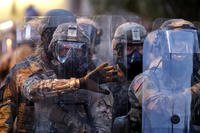
It seems like the National Guard has been everywhere in recent years: Battling wildfires this week in California, patrolling...
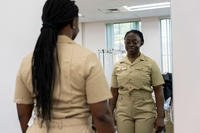
The Pentagon said it is working on another tranche of changes and programs -- including Wi-Fi in barracks rooms, new health...
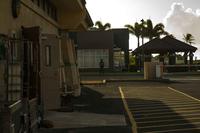
A Marine stationed in Hawaii remains in custody this week in connection to the death of a dependent, service officials told...

The U.S. State Department has not declared the Americans wrongfully detained, making it unlikely that U.S. officials would...
Latest Benefits Info
- VA Loan Eligibility for Surviving Spouses
- How to Buy Your Not-Forever Home
- Air Force Tuition Assistance
- National Guard Tuition Assistance
- Coast Guard Tuition Assistance
More Military Headlines
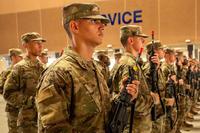
Chief Master Sergeant of the Air Force David Flosi said during a media roundtable at the annual Air and Space Forces...
- Fired West Point Garrison Commander Found Not Guilty on Drunk Driving Charges
- AAC Ramps Up Interest in Adding Air Force to Conference with Army and Navy, AP Source Says
- The Time an Army Bomber Crashed into the Empire State Building During WWII
- Air Force Hits Recruiting Goals with Help from Tweaks to Body Fat Standards, Tattoo Policy
- Air Force Top Enlisted Leader Says Trainees Carrying Real Rifles at Boot Camp Is 'Desired End State'
- Sailor Shortage Is Undermining Navy’s Ability to Keep Ships Combat-Ready, Watchdog Says
- Sailor Held by Venezuela for Alleged Maduro Assassination Plot Is a Navy SEAL, Service Records Show
Military Benefits Updates
- The Next Deadline for Backdated PACT Act Payments Is Coming Soon. Here’s What You Need to Know
- VA Fertility Benefits for Military Veterans
- Fertility Benefits for Active-Duty Service Members
- Neo-Nazi Group Led by 2 Ex-Marines Pushed and Cheered Haitian Pet-Eating Claims Gripping Ohio City
- Marine Crew Chief Who Died Trying to Save Trapped Pilots in Osprey Crash Awarded Service's Highest Noncombat Honor
- Camp Pendleton Marine Who Made and Sold 'Ghost' Rifles Sentenced to Prison
- The Coast Guard Will Hear from Former OceanGate Employees about the Titan Implosion
- US Coast Guard Academy
- Ex-Employees of Titanic Submersible's Owner to Testify Before Coast Guard Panel
Entertainment
- 5 Films and TV Shows About Operation Market Garden, Recommended by a War Historian
- A New Documentary About Russia's Invasion of Ukraine Has the Film Festival Circuit Up in Arms
- James Earl Jones' First Movie Role Was a Small Part of the Biggest Cold War Film Ever

| | ||
| 01 | - Retired as Vice Admiral | November 1941 - August 1942 |
| 02 | 10 December 1942 - 1943 | |
| Comments, Suggestions, E-mail |














COMMENTS
The Nourmahal was originally built as a yacht for multi-millionaire Vincent Astor in 1928 at Krupp Iron Works in Kiel, Germany.This was the third Astor family yacht to bear the name, replacing a smaller Nourmahal designed by Cox & Stevens, Inc. and built by Robert Jacob Shipyard, City Island NY., launched March, 1921. [2] [3] Astor was the heir to a large New York real estate fortune after his ...
Published March 14, 2024 at 10:36am ET. Vincent Astor's yacht, the Nourmahal, was among the largest private boats on the seas. Partly financed by the more than $300,000 profits realized from his ...
Access to this collection is generously supported by Arcadia funds.The Nourmahal sits in the middle of the ocean with a couple of smaller boats in the water around it.Similar photograph appears on a photo page with the headline, "Nourmahalhere to embark on exploration cruize," Los Angeles Times, 05 Feb 1936: 8.Text from negative sleeve: 3561 - Vincent Astor's Nourmahal- Diesel Yacht.- [stamped ...
The USS Nourmahal was a ship of about 80 m in length, built in 1928 as a pleasure yacht for the American billionaire Vincent Astor at the Krupp shipyard in Kiel, Germany. She was the third Astor family yacht to bear that name (which in Hindi means "Light of the Palace" and belongs to the heroine of a poem in Lalla Rookh , a novel by Thomas ...
President Franklin D. Roosevelt and a party of close friends leave Poughkeepsie, N.Y., aboard Vincent Astor's palatial yacht Nourmahal, for a cruise at sea, Aug. 31, 1933.
The End, US President, USA, Washington DC, Washington Navy Yard, Yacht, Aboard Vincent Astor's yacht "Nourmahal," President Roosevelt arrived at the Navy Yard, Washington, D.C. ending his summer vacation. Photo shows Vincent Astor and President Roosevelt. Get premium, high resolution news photos at Getty Images.
Nourmahal (PG-72), a yacht built in 1928 by the Krupp Iron Works, Kiel, Germany, was acquired by the Navy from William Vincent Astor by bareboat charter agreement 3 March 1942, to be operated under Navy ownership by the Coast Guard.She was designated Nourmahal (PG-72) 9 April 1943 and purchased by the Navy 29 June in accordance with an option in the original charter agreement.
Dictionary of American Naval Fighting Ships History: Nourmahal (PG-72), a yacht built in 1928 by the Krupp Iron Works, Kiel, Germany, was acquired by the Navy from William Vincent Astor by bareboat charter agreement 3 March 1942, to be operated under Navy ownership by the Coast Guard.She was designated Nourmahal (PG-72) 9 April 1943 and purchased by the Navy 29 June in accordance with an ...
Text from negative sleeve: 3561 - Vincent Astor's Nourmahal- Diesel Yacht.- [stamped:] Feb 7- 1936. Text from newspaper caption: Vincent Astor's palatial yacht Nourmahal as she reated in the waters at San Pedro yesterday afrter her arrival from New York. Astor will arrive here February 14, to embark on two-month's cruise in equatorial waters ...
Astor used the Nourmahal for pleasure, exploration, and philanthropy, and frequently entertained President Franklin D. Roosevelt on board. In 1940 Astor leased the yacht, for $1, to the Coast Guard effective August 21st 1940 for service as a weather station vessel. In 1942, she was transferred to the Navy and then sold to the Navy the following year. The first entry in the log are from the ...
Astor's yacht Nourmahal was donated for military service during World War II. USS NOURMAHAL (PG-72) at Guantanamo Bay Naval Base, Cuba, circa 1943. She lat...
The letterhead read simply Nourmahal, the name of Astor's yacht. The very word suffused FDR with warm memories. ... Harold Ickes, his interior secretary, as crusty and blunt as Roosevelt was ...
Nourmahal was built at the Friedrich Krupp Germaniawerft Boat works (Krupp Iron Works) in Keil, Germany, and launched in 1928. This was the third and largest Astor boat with the same name over the years. The previous Nourmahal was designed by Cox and Stevens and constructed by the New York Robert Jacob Shipyard, City Island, New York.
USS Nourmahal (WPG-122) Nourmahal (PG-72), a yacht built in 1928 by the Krupp Iron Works, Kiel, Germany, was acquired by the Navy from William Vincent Astor by bareboat charter agreement 3 March 1942, to be operated under Navy ownership by the Coast Guard. She was designated Nourmahal (PG-72) 9 April 1943 and purchased by the Navy 29 June in ...
Sea Cloud was built in Kiel, Germany, as a barque for Marjorie Merriweather Post and her second husband Edward F. Hutton of Wall Street's E. F. Hutton & Co. [2] [3] The yacht interiors and features were personally designed by Post, who took a course in marine engineering, and had full size interior mocks-ups done in a New York warehouse. [4] [5] She was launched in 1931 as Hussar V as a ...
THE ASTOR YACHT NOURMAHAL ALSO A FLOATING LABORATORY; The Ship Upon Which the President-Elect Cruises Has Made Long Voyages in the Interest of Science. Share full article. Feb. 12, 1933.
History: Nourmahal (PG-72), a yacht built in 1928 by the Krupp Iron Works, Kiel, Germany, was first received from William Vincent Astor on 21 August 1940 for service as a weather station vessel in the Coast Guard Reserve fleet.She was reconditioned at the Coast Guard Yard from 22 September through 1 December 1941 and was then assigned to New York. She departed the Yard and sailed for Norfolk ...
The mystery ship is a yacht called Nourmahal. She was built in 1884 at the Harlan & Hollingsworth shipyard in Wilmington, Delaware, USA for William Astor. The vessel used both steam power and sails as propulsion, and was equipped with a bark rig. Her length was 250ft and she was of 745gt. Designed by Gustav Hillman, the yacht was later owned by ...
The Nourmahal was a motor yacht ordered by William Vincent Astor from Friederich Krupp Germaniawerft, A.G., Kiel, Germany. It was delivered during 1928 presumably as a replacement for Astor's previous yacht Noma. Time magazine on February 6th 1928 featured a cover article on Astor and the Nourmahal which was described as the finest private ...
The Yacht Nourmahal Letter and Photographs from Vincent Astor American: 1938 2 signed letters, 10.5 x 8.25 inches 4 black and white photographs, 7.75 x 9.75 inches each. The Yacht Nourmahal memorabilia, comprised of two Vincent Astor letters, a photograph of the yacht inscribed by Astor, together with three other photographs of the Nourmahal.
BOAT's brokerage editor says: Aalto sports a powerful exterior by Nuvolari Lenard that contains a high-volume 2,310GT interior, exquisitely finished and detailed by Paris-based Agence Pinto. Constructed in the Netherlands by Oceanco, she is packed with design features - including a stabilised pool table, heated pool, owner's suite with two Jacuzzis, circular skylights, circular indoor ...
The hull and deck of the in-build Classic 35 explorer yacht have been joined, and new interior renderings are available. Build Updates First Atlante Classic 35: New interior images of in-build explorer yacht unveiled. Written by Ellen Ranebo. Tue, 17 Sept 2024 | 12:00.
The first interior renderings of the 45-metre Adele Yachts 45m superyacht series on the market have been unveiled. Build Updates New shipyard Adele Yachts unveils in-build 45m superyacht model . Written by Ellen Ranebo. Tue, 17 Sept 2024 | 16:30.